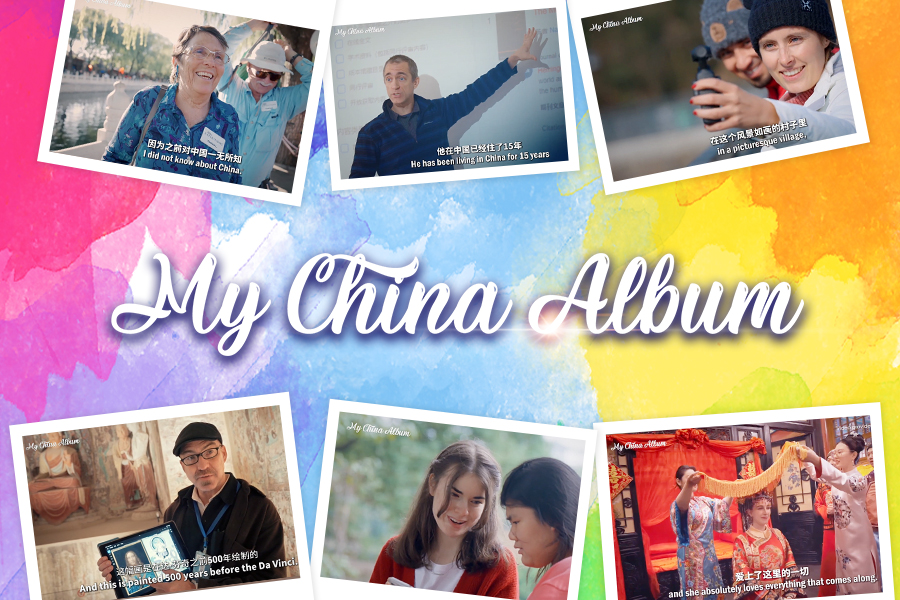China's International Development Cooperation in the New Era
China Daily | Updated: 2021-01-11 08:01
1. Steady Growth
China has steadily increased the scale and further expanded the scope of its foreign aid. From 2013 to 2018, China allocated a total of RMB270.2 billion for foreign assistance in three categories-grants, interest-free loans, and concessional loans. Grants of RMB127.8 billion, accounting for 47.3 percent of the total, mainly went to help other developing countries build small and medium-sized social welfare projects and to fund projects for cooperation in human resources development, technical cooperation, material assistance, and emergency humanitarian assistance, as well as projects under the South-South Cooperation Assistance Fund. Interest-free loans of RMB11.3 billion, constituting 4.18 percent of the total, were mainly allocated to help developing countries construct public facilities and launch projects for improving local people's lives. Concessional loans of RMB131.1 billion, making up 48.52 percent of the total, were provided to help developing countries undertake industrial projects and large and medium-sized infrastructure projects that yield economic and social benefits, and for the supply of technical services, complete sets of equipment, mechanical and electrical products, and other goods and materials.
From 2013 to 2018, China extended assistance to 20 regional and international multilateral organizations and 122 countries across the world-30 in Asia, 53 in Africa, 9 in Oceania, 22 in Latin America and the Caribbean, and 8 in Europe.
2. Diverse Forms
In addition to undertaking complete projects, providing goods and materials, and conducting technical cooperation, China set up the South-South Cooperation Assistance Fund in 2015 to launch development cooperation programs, and continues to explore new models and methods of foreign aid.
-Complete projects. From 2013 to 2018, China undertook the construction of 423 complete projects, with the focus on infrastructure and agriculture. In addition to the traditional "turnkey" model of assistance, China also launched pilot projects in some countries and regions with sound tendering processes and experience in organizing and implementing such projects. Under this model, China provided both funds and technical assistance to those projects, and the recipient countries were responsible for site survey, design, construction, and process management.
China-Funded Complete Projects by Sector, 2013-2018
Sector Number of projects
Public facilities: 306
hospitals 58 schools 86 civil construction 19
well-drilling and water supply 20
public infrastructure 60 others 63
Economic infrastructure: 80
transport 56 biogas 1
broadcast and telecommunications 13 electricity 6
others 5
Agriculture: 19
agricultural pilot centers 5 farmland water conservancy 2
agricultural processing 6 others 6
Industry 5
Climate change programs: 13
wind and solar energy 10 biogas 1 small hydropower 2
Total 423
-Goods and materials. From 2013 to 2018, China provided 124 countries and regions with 890 deliveries of goods and materials, most of which comprised mechanical equipment, inspection equipment, transport vehicles, medicine and medical devices.
-Technical cooperation. From 2013 to 2018, China completed 414 such projects in 95 countries and regions, mainly covering industrial production and management, agricultural planting and breeding, culture and education, sports and training, medical and health care, clean energy development, and planning and consulting.
-Cooperation in human resources development. From 2013 to 2018, China held more than 7,000 training sessions and seminars for foreign officials and technical personnel and in-service education programs, training a total of some 200,000 people. Such projects cover more than 100 subjects in 17 fields, including politics and diplomacy, public administration, national development, poverty reduction through agricultural development, medical and health care, education and scientific research, culture and sports, and transport.
Institute of South-South Cooperation and Development
President Xi Jinping announced a plan to establish the Institute of South-South Cooperation and Development (ISSCAD) during the High-Level Roundtable on South-South Cooperation co-hosted by China and the United Nations in September 2015. In April 2016, ISSCAD was set up in Peking University. Its goal is to share China's experience in state governance and train talent from other developing countries to modernize their governance capacity. Since its founding ISSCAD has enrolled around 220 doctoral and master's candidates from 59 developing countries, representing governments, academic institutions, news media and NGOs.
In July 2017, when the first 26 students of ISSCAD graduated with their master's degrees, they read out a thank-you letter to President Xi Jinping. On October 11, Xi wrote back to congratulate them on their graduation, encouraging them to make the best of what they had learned, keep going, aim high, and work hard to explore a sustainable development path suitable for their own countries, and become leaders of reform and development. Xi hoped they would cherish their friendships with teachers, classmates and friends in China, play new roles in promoting friendship and cooperation between China and their countries, and achieve new successes in South-South cooperation.
-South-South Cooperation Assistance Fund. By the end of 2019, China had launched 82 projects under the SSCAF framework in cooperation with 14 international organizations, including the United Nations Development Programme (UNDP), World Food Programme (WFP), World Health Organization (WHO), United Nations Children's Fund (UNICEF), United Nations Population Fund (UNFPA), United Nations High Commissioner for Refugees (UNHCR), International Organization for Migration (IOM), and International Committee of the Red Cross (ICRC). These projects cover agricultural development and food security, poverty reduction, health care for women and children, response to public health emergencies, education and training, post-disaster reconstruction, migrant and refugee protection, and aid for trade.
South-South Cooperation Assistance Fund
In September 2015, President Xi Jinping announced at the United Nations Sustainable Development Summit the creation of the SSCAF with an initial contribution of US$2 billion, to support developing countries in carrying out the UN 2030 Agenda for Sustainable Development. In May 2017, President Xi announced an additional contribution of US$1 billion to the SSCAF at the First Belt and Road Forum for International Cooperation in Beijing.
By pooling resources from China and the international community, the SSCAF aims to promote South-South cooperation, and support developing countries in participating in global economic governance on an equal footing. It is an innovative initiative for the Chinese government to champion the 2030 Agenda and facilitate sustainable development in other developing countries. It embodies China's effort to value and bolster South-South cooperation, and demonstrates that as a major country, China honors its responsibilities and welcomes other countries to board the express train of its development to achieve common progress.
The SSCAF gives priority to humanitarian aid, agricultural development and food security, health care, poverty alleviation, disaster preparation and mitigation, education and training, sustainable industrial development, eco-environmental protection, trade promotion, and investment facilitation. It focuses on micro and small public wellbeing projects in cooperation with mainly international organizations, think tanks, and social organizations from China and recipient countries.
-Medical teams. By the end of 2019, China had dispatched 27,484 medical workers in 1,069 groups to 72 countries and regions. They worked in all departments of medical and health care, including internal medicine, surgery, gynecology, pediatrics, traditional Chinese medicine, anesthesiology, patient care, pathology, clinical laboratories, and public health. Currently there are nearly 1,000 Chinese medical workers providing assistance at 111 health care facilities in 55 countries across the globe.
-Outbound volunteers. From 2013 to 2018, China dispatched more than 20,000 young volunteers and volunteer Chinese-language teachers to work in over 80 countries around the world.
-Emergency humanitarian aid. From 2013 to 2018, China extended emergency humanitarian assistance to 60 countries. This included providing supplies and equipment, dispatching international rescue teams and medical expert groups, and repairing damaged facilities.
-Debt relief. From 2013 to 2018, China canceled RMB4.18 billion of debts involving 98 mature interest-free loans to least developed countries, heavily indebted poor countries, and landlocked and small island developing countries.
























